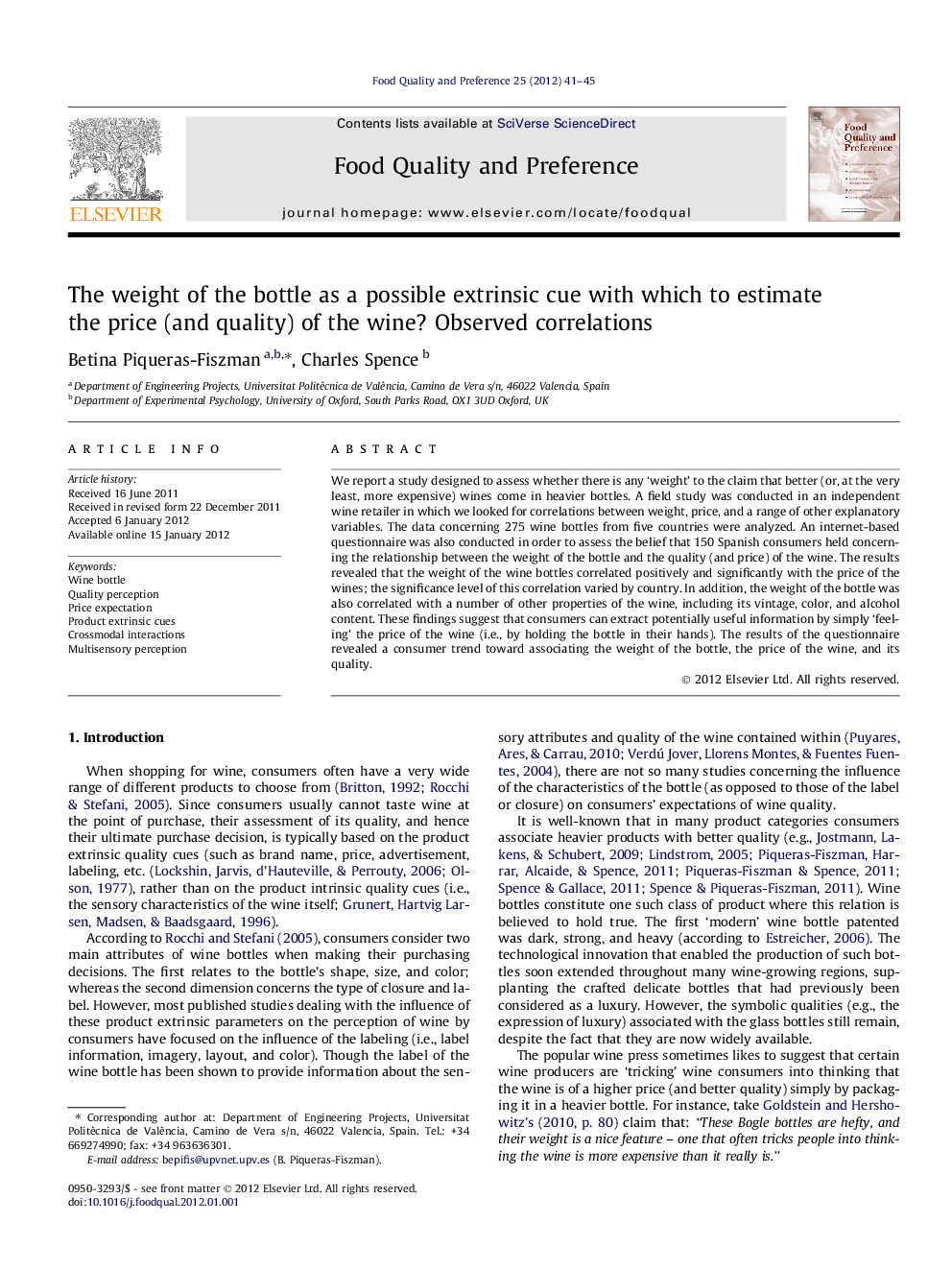| Article ID | Journal | Published Year | Pages | File Type |
|---|---|---|---|---|
| 4317600 | Food Quality and Preference | 2012 | 5 Pages |
We report a study designed to assess whether there is any ‘weight’ to the claim that better (or, at the very least, more expensive) wines come in heavier bottles. A field study was conducted in an independent wine retailer in which we looked for correlations between weight, price, and a range of other explanatory variables. The data concerning 275 wine bottles from five countries were analyzed. An internet-based questionnaire was also conducted in order to assess the belief that 150 Spanish consumers held concerning the relationship between the weight of the bottle and the quality (and price) of the wine. The results revealed that the weight of the wine bottles correlated positively and significantly with the price of the wines; the significance level of this correlation varied by country. In addition, the weight of the bottle was also correlated with a number of other properties of the wine, including its vintage, color, and alcohol content. These findings suggest that consumers can extract potentially useful information by simply ‘feeling’ the price of the wine (i.e., by holding the bottle in their hands). The results of the questionnaire revealed a consumer trend toward associating the weight of the bottle, the price of the wine, and its quality.
► The weight of wine bottles correlated positively with the price of wine. ► The weight of the bottle was also correlated with the wine’s vintage, color, and alcohol content. ► The significance level of these correlations varied by country. ► Significant effects were found in consumers’ ratings relating the weight, price, and quality of the wine.
